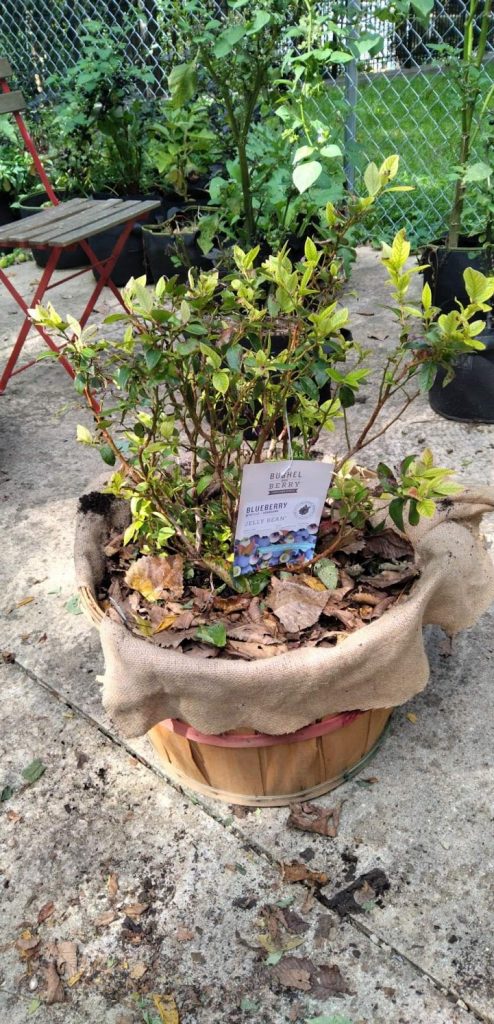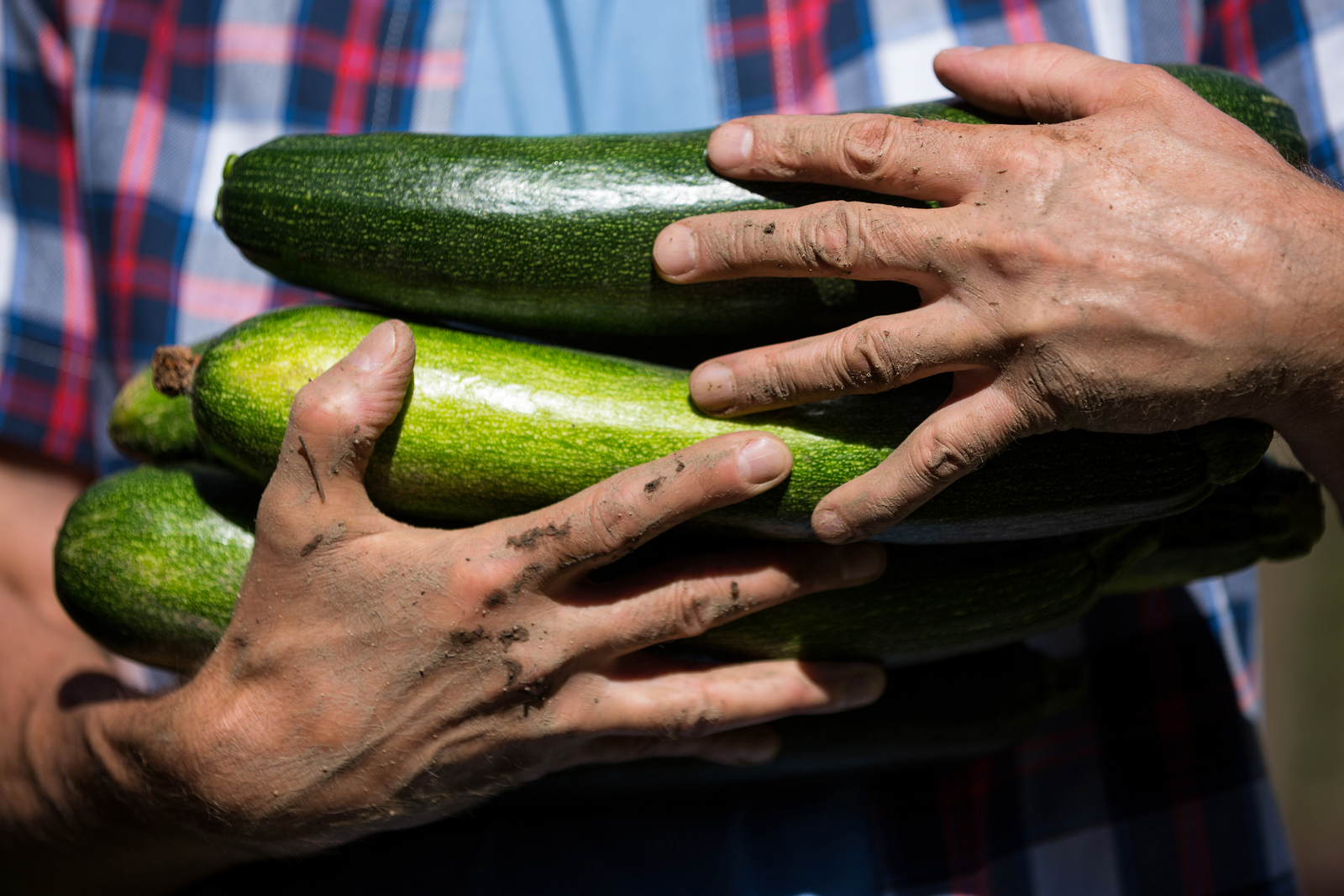If you have dreams of a lush, abundant vegetable garden, you’re probably wondering — what kind of budget does it take to start a garden? The truth is, you can grow veggies to some extent with no money at all, but there are a lot of smart investments that you can make for a larger, better-producing veggie garden. Here are a few budget options depending on the size of garden you’re looking to grow:
Small indoor garden — $0-$100
If your dream garden involves a few simple herbs in a sunny windowsill, you may be able to get away with a budget of $0.
How to create a small indoor garden for free
The basic materials you need for a small indoor garden are containers, soil, and seeds or plants — plus natural sunshine. You may be able to acquire all of these things completely for free! Clean and save any large plastic tub that you get from food items — like cottage cheese or butter. Cut or drill a few holes in the bottom of the container for drainage. Saving the lid is a great idea because you can place the container on top of the lid to catch any runoff water.
Next, you’ll need to work on getting free soil. When you are just filling a few small containers, it’s easy to find a friend, neighbor, or community member who has a little bit of extra gardening or potting soil and is willing to share.
Finally, the plants themselves! You can regrow food craps like green onions or lettuce, or propagate fresh herbs that you use in your cooking like basil, cilantro, and thyme. There are also very small tomato plant varieties that usually do OK in a sunny indoor setting. You can see if your local library has a free seed bank, or check out our full list of ways to get seeds for free.
Investments to make for your indoor garden for less than $100
Making a small investment up to $100 can help your indoor garden thrive, and allow you to grow a greater variety of veggies with higher production. If my budget was $100, my first investment would be in a small indoor hydroponics system like this one (or anything comparable). You can find generic brand hydroponics systems for $50-$75 on Amazon, or even cheaper during big sales.
My second investment would be in some .5-gallon containers and high-quality potting soil. You can find bags of potting soil at hardware stores like Lowe’s or Home Depot. Expect to spend $5-$12 depending on the quality of the soil and the size of the bag.
Finally, I would invest in a few packets of seeds. I recently bought Orange Hat tomato seeds to try growing in the winter — the plants grow to be only 6-9″ tall! Veggies that don’t grow to be huge and that don’t need tons of direct sunlight are great for growing indoors, like lettuce and herbs.
Small outdoor garden — $0-$250
If you have a small patio or space that is around 6ft x 6ft, you might spend anywhere from $0 to $250 for a nice little veggie garden. In that space, you can grow a variety of greens, radishes, carrots, and one or two larger plants like tomatoes, peppers, or eggplants.
How to create a small outdoor veggie garden for free
Similarly to small indoor gardens, there are lots of ways to acquire most of the things you will need for free. Lean heavily on your community resources and “buy nothing” groups on Facebook, plus your own friends and family who might be willing to share their soil, seeds, and more. You can use extra containers like 5-gallon buckets or storage totes, build a small garden box from free pallets or discarded wood, or if you have a bare patch of earth, plant directly in the ground! Your local city or forestry department may be able to help with resources like free compost and mulch.
Investments to make for your small outdoor garden for less than $200
The best investments you can make for a small outdoor veggie garden really depend on your personal space, preferences, and existing resources.
High-quality soil is one of the best investments that you can make for your garden, so that is one place that I wouldn’t skimp.
If you have the space and nutritious soil already, planting directly in the earth with a bit of added compost is a great way to save money. Some people prefer raised garden beds or containers because it allows them to better control the quality of the soil and better manage pests. You can often find locally made raised garden beds on Facebook marketplace for $50 or less, and garage and estate sales often have very cheap gardening containers.

So, my priorities for a small garden under $200 would be to find good containers or raised beds ($50 or less), fill them with high-quality soil and compost ($50-$100 if I’m not being thrifty, or much less if I’m leveraging community resources), and then have fun finding seeds and seedlings for plants that I want to try growing.
Large outdoor garden — $0-$1,000+
Designing and building a large outdoor veggie garden is the most fun that you can have as a gardener! It’s possible to get by on free materials, but it’s much easier if you have a budget of at least $250, or ranging up to $1,000 or more. For a large garden, you will likely want tools like shovels, clippers, and gloves, mulch to create walkways, possibly raised beds, lots of high-quality soil and compost, a wide variety of plants to grow, and maybe even something fun like trellises, arches, or hoops and tunnels to protect from pests or frost.
How to create a large outdoor veggie garden for free
Designing a large outdoor garden with zero budget is extremely difficult, but it is sometimes possible! In order to get the quantities of soil and mulch that you will need, you will need to leverage community resources provided by your city. If you’re able to plant directly in the ground, that saves a lot of money, but you will need to ensure that the soil is high quality and well drained. You will also need to source free tools like a shovel and clippers, which might be possible through your network of friends, or through buy nothing groups on Facebook. For the seeds or plants themselves, you might leverage local seed swaps, save the seeds from veggies you buy at the store, or use your library’s free seed bank.
Investments to make to build a large outdoor veggie garden for less than $1,000
Again, high-quality soil is one of the greatest investments you can make for any garden, so if you have the budget, plan on spending a fair amount of money on the soil. Soil amendments like fish emulsion and blood meal may be a good idea depending on the nutrient content of your soil.
A wheelbarrow might also be a valuable investment if you have a large garden because you will be moving large quantities of soil and mulch. You can find a small wheelbarrow starting at around $50 at your local hardware store. You’ll also benefit from having a shovel, a hand shovel, hand clippers, and gloves.
Personally, I just purchased two large raised garden beds for my outdoor garden. I bought metal beds that are 8 ft x 4 ft x 1ft which cost $129 on Amazon for both of them. For some reason, the product listing is no longer active, but there are 2 packs of 6 ft x 3 ft x 1 ft beds for $93 discounted from $109 (last checked Oct 7, 2022) which is also a great deal.
My plan is to leverage free mulch from my city to create walking paths between them, and to order a bulk compost delivery to use, blended with some soil.
I like to have a wide variety of fun veggies to grow, so one of my biggest investments is in seeds. I order from Baker’s Creek and then try to save the seeds from whatever I grow so that I don’t have to buy seeds again in the future.
Don’t let budget hold you back from starting your dream garden! It’s possible to design a large garden without any budget at all if you’re very industrious and use all of the free resources at your disposal. Or, you can swap convenience for a small budget in some areas to grow the biggest, lushest garden of your dreams. Be sure to join our free gardening community to share advice, make friends, and swap resources!
